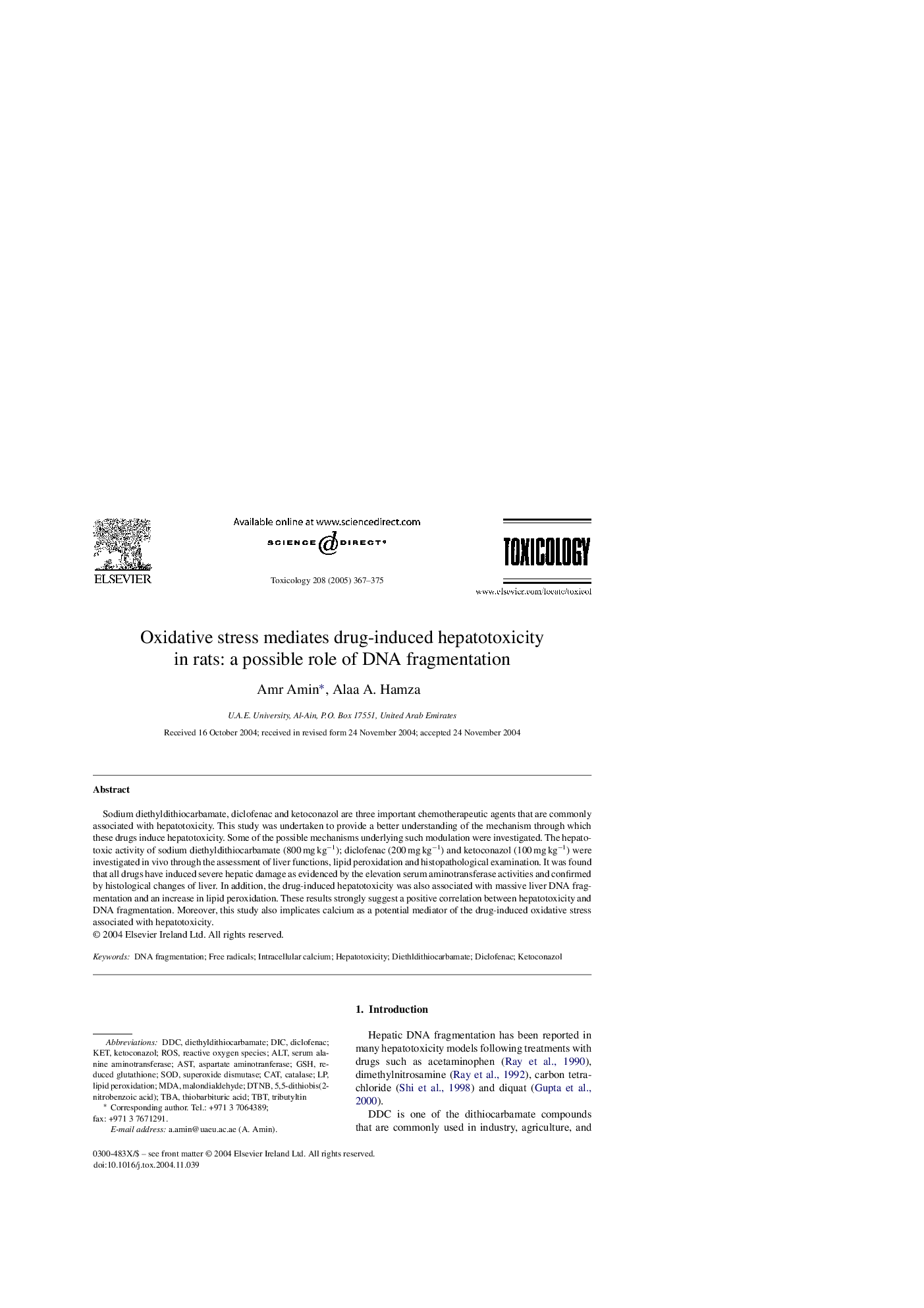| Article ID | Journal | Published Year | Pages | File Type |
|---|---|---|---|---|
| 9034657 | Toxicology | 2005 | 9 Pages |
Abstract
Sodium diethyldithiocarbamate, diclofenac and ketoconazol are three important chemotherapeutic agents that are commonly associated with hepatotoxicity. This study was undertaken to provide a better understanding of the mechanism through which these drugs induce hepatotoxicity. Some of the possible mechanisms underlying such modulation were investigated. The hepatotoxic activity of sodium diethyldithiocarbamate (800 mg kgâ1); diclofenac (200 mg kgâ1) and ketoconazol (100 mg kgâ1) were investigated in vivo through the assessment of liver functions, lipid peroxidation and histopathological examination. It was found that all drugs have induced severe hepatic damage as evidenced by the elevation serum aminotransferase activities and confirmed by histological changes of liver. In addition, the drug-induced hepatotoxicity was also associated with massive liver DNA fragmentation and an increase in lipid peroxidation. These results strongly suggest a positive correlation between hepatotoxicity and DNA fragmentation. Moreover, this study also implicates calcium as a potential mediator of the drug-induced oxidative stress associated with hepatotoxicity.
Keywords
5,5-dithiobis(2-nitrobenzoic acid)MDADICKETCATTBATributyltinGSHTBTALTDTNBddCROSASTserum alanine aminotransferaseThiobarbituric acidDNA fragmentationdiethyldithiocarbamateDiclofenacFree radicalsSODHepatotoxicitySuperoxide dismutasemalondialdehydeLipid peroxidationCatalasereduced glutathioneIntracellular calciumReactive oxygen species
Related Topics
Life Sciences
Environmental Science
Health, Toxicology and Mutagenesis
Authors
Amr Amin, Alaa A. Hamza,
